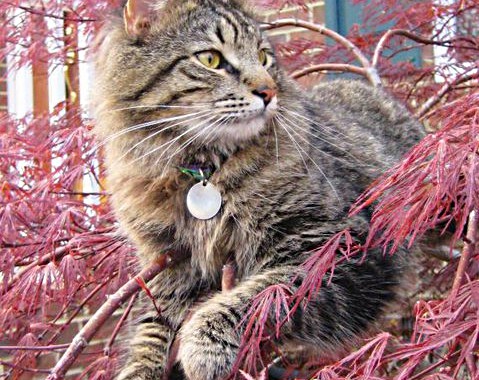Indoor Life vs. Outdoor Life for Your Favorite Feline
There seems to be two popular schools of thought when it comes to our feline friends: 1) Domestic cats are indeed relatives of wild cats, therefore they will be happier and better off left outside, and 2) Domestic cats are known as ‘house cats’ for a reason – they are meant to stay inside. So, does keeping a cat inside go against nature? Are you being selfish for wanting your cuddly kitten to stay inside with you? Would I be a better pet parent if I kept him inside most of the time, but let him wander outdoors on occasion? No, no and no!
Sure, we may think the outdoor life is more fulfilling for Fluffy, but did you know it can shorten her life span to an average of only two to five years? Compared to the twenty-plus years a healthy indoor-only cat can live, a mere two to five years simply isn’t fair.
Outdoor Risks
It is proven that an outdoor cat lives a more stressful life than an indoor cat, and stress can lead to innumerable physical and psychological disorders, just as it can in humans. While the freedom to roam may be a benefit in Fluffy’s book, it can lead to dangerous situations. Outdoor cat dangers include:
- Exposure to infectious diseases like feline leukemia virus and feline immunodeficiency virus (remember, vaccinations can’t provide infallible protection; reducing exposure is an important part of prevention);
- Wounds resulting from attacks or fights with other animals;
- Being struck by a car;
- Inadvertently ingesting toxic chemicals (even self-grooming can be a danger after walking through a chemically treated yard);
- Infestation of fleas, ticks, mosquitos and any other insect looking to hitch a ride or find a food source; and
- Retaliation from an unsympathetic human who got angry over cat prints on his car or poop in his flower bed.
If you are a pet parent to an adventurous outdoor feline, you may be saying “My cat is too smart to get hit by a car” or “My cat wouldn’t hurt a fly; he’d never get into a fight.” It only takes one mistake. One moment of fear-induced flight from a neighborhood dog can result in your cat not noticing an oncoming car. One indulgence in a sweet treat of antifreeze can cause severe internal injury, or even death.
Bring the Outdoors Inside
Cats are sensory creatures who get pleasure from different sights, tastes, smells and sounds. They need to exercise their bodies and their minds. While the outdoors seems a natural environment to fulfill your cat’s wants and needs, you can easily satisfy her cravings by bringing the outdoors inside. Plant some oat grass or catnip to offer indoor grazing options. Put a perch beside a window. Provide a scratching post or kitty condo to keep your cat active and entertained. Better yet, add a second cat or a dog to the mix to provide him with companionship and entertainment.
The Bottom Line
Whether you choose to raise your cat indoors or out, it’s just that – your choice. But, before choosing, consider your environment and the possible outdoor hazards and make the choice that is best for your furry friend.
